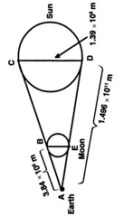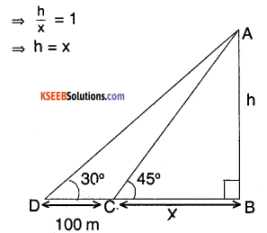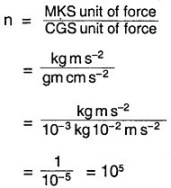You can Download Chapter 16 कुटिया में राजभवन Questions and Answers Pdf, Notes, Summary, 1st PUC Hindi Textbook Answers, Karnataka State Board Solutions help you to revise complete Syllabus and score more marks in your examinations.
Karnataka 1st PUC Hindi Textbook Answers Sahitya Vaibhav Chapter 16 कुटिया में राजभवन
कुटिया में राजभवन Questions and Answers, Notes, Summary
I. एक शब्द या वाक्यांश या वाक्य में उत्तर लिखिएः
प्रश्न 1.
सीता जी का मन कहाँ भाया?
उत्तर:
सीता जी का मन कुटिया में भाया।
प्रश्न 2.
सीता जी के प्राणेश कौन थे?
उत्तर:
सीता जी के प्राणेश सम्राट श्रीराम थे।
प्रश्न 3.
सीता जी कुटिया को क्या समझती हैं?
उत्तर:
सीता जी कुटिया को राजभवन समझती हैं।
![]()
प्रश्न 4.
नवीन फल नित्य कहाँ मिला करते हैं?
उत्तर:
डाली-डाली में नित्य नवीन फल मिला करते हैं।
प्रश्न 5.
सीता की गृहस्थी कहाँ जगी?
उत्तर:
सीता जी की गृहस्थी वन में जगी है।
प्रश्न 6.
वधू बनकर कौन आयी है?
उत्तर:
जानकी वधू बनकर आई है।
प्रश्न 7.
सीता की सखियाँ कौन हैं?
उत्तर:
मुनि बालायें सीता जी की सखियाँ हैं।
अतिरिक्त प्रश्नः
प्रश्न 8.
कुटिया में सचिव कौन थे?
उत्तर:
कुटिया में देवर लक्ष्मण सचिव थे।
प्रश्न 9.
कुटिया में आकर सभी को कौन आशीष देते हैं?
उत्तर:
कुटिया में मुनिवर आकर सभी को आशीष देते हैं।
प्रश्न 10.
तट पर आकर कौन पानी पीते हैं?
उत्तर:
मृग एवं सिंह तट पर आकर पानी पीते हैं।
![]()
प्रश्न 11.
किसलय-कर किस हेतु हिला करते हैं?
उत्तर:
किसलय-कर स्वागत हेतु हिला करते हैं।
प्रश्न 12.
प्रकृति निधि खोले क्या दिखा रही है?
उत्तर:
प्रकृति निधि खोले प्रकृति की निज माया दिखा रही है।
प्रश्न 13.
सीता जी के लिए क्या क्रीडा सामग्री बन गई है?
उत्तर:
सीता जी के लिए स्वयं की छाया क्रीडा सामग्री बन गई है।
प्रश्न 14.
‘कुटिया में राजभवन’ कविता के कवि कौन हैं?
उत्तर:
‘कुटिया में राजभवन’ कविता के कवि मैथिलीशरण गुप्त हैं।
II. निम्नलिखित प्रश्नों के उत्तर लिखिएः
प्रश्न 1.
सीता जी अपनी कुटिया में कैसे परिश्रम करती थीं?
उत्तर:
सीता जब वनवास जाने के लिए राजभवन छोड़कर श्रीराम और लक्ष्मण सहित वन में कुटिया बसाती है, वहाँ उसका काम करने के लिए कोई दासी नहीं होती। वह स्वयं पसीना बहाकर सारे गृह कार्य जैसे भोजन बनाना, कुटिया की सफाई, पानी लाना आदी करती है जिससे उसका ‘आत्म स्थैर्य बड़ता है और दूसरों पर निर्भर होने की आदत छूट जाती है। कुटिया में आकर उसे घर और परिवार के महत्व का पता चलता है।
प्रश्न 2.
सीता जी प्रकृति-सौंदर्य के बारे में क्या कहती हैं?
उत्तर:
सीता जी प्रकृति-सौंदर्य के बारे में कहती हैं कि – यह मेरा सौभाग्य है कि मुझे प्रकृति में रहने का, विचरण करने का अवसर मिला है। यहाँ की हरियाली, शुद्ध हवा, पशु-पक्षियों का कलरव, लता-फूल आदि मन को प्रसन्न-चित्त करने वाली प्रकृति की शोभा है। यह प्रकृति का मायालोक किसी राजभवन से कम नहीं।
![]()
प्रश्न 3.
सीता जी कुटिया में कैसे सुखी हैं?
उत्तर:
‘सीता जी को कुटिया ही राजभवन की तरह लग रही है। क्योंकि उनके प्राणेश उनके साथ हैं, देवर लक्ष्मण भी सचिव की तरह प्रहरी बने हुए. है। इसके अलावा प्राकृतिक सौन्दर्य ने उनको मोह लिया है। सीताजी स्वावलम्बी बनी हुई हैं.। प्रकृति के कण-कण को सीता जी ने राजभवन के सुख-वैभव के रूप में अपना लिया है।
प्रश्न 4.
‘कुटिया में राजभवन’ कविता का आशय संक्षेप में लिखिए।
उत्तर:
‘कुटिया में राजभवन’ इस कविता का आशय है- सीता जी वन में भी राजसुख भोगती हैं। श्रीरामचंद्र जी स्वयं सीता जी के साथ-साथ रहते हैं। देवर लक्ष्मण मंत्री के रूप में कार्य कर रहे हैं। यहाँ धन और राज-वैभव का कोई मूल्य नहीं है।
अतिरिक्त प्रश्नः
प्रश्न 5.
कुटिया में रहते हुए सीताजी राजसुख के बारे में क्या सोचती हैं?
उत्तर:
सीताजी कहती है कि मेरा मन इस कुटिया में राजभवन की तरह लग गया है। मैं यहाँ दूसरों की सेवा चाकरी के बल पर नहीं पलती हूँ। यहाँ श्रम करने से स्वास्थ्य भी अच्छा रहता है। वन में ही मैं गृहस्थ जीवन जी रही हूँ। मेरा यह जीवन ही सबसे बड़ा राजसुख है। यही सच्चा राजसुख है।
प्रश्न 6.
सीता जी अपने भाग्य के बारे में क्या कहती हैं?
उत्तर:
सीता जी वनवास में जीवन यापन करते हुए कहती हैं कि कौन कहता है मेरा भाग्य रूठ गया है। बल्कि मेरा तो भाग्य यहाँ आकर खुल गया है। अब मैं असली जीवन का आनंद ले रही हूँ। यहाँ तो जानकी वधू बनकर आयी है। यहाँ धन और राजवैभव का कोई मूल्य नहीं है।
III. ससंदर्भ भाव स्पष्ट कीजिए:
प्रश्न 1.
औरों के हाथों यहाँ नहीं पलती हूँ,
अपने पैरों पर खड़ी आप चलती हूँ,
श्रमवारि-बिन्दु फल स्वास्थ्य-शुक्ति फलती हूँ
अपने अचल से व्यंजन आप झलती हूँ।
उत्तर:
प्रसंग : प्रस्तुत पद्यांश हमारी पाठ्य पुस्तक ‘साहित्य वैभव’ के ‘कुटिया में राजभवन’ नामक आधुनिक कविता से लिया गया है। इसके रचयिता मैथिलीशरण गुप्त हैं।
संदर्भ : प्रस्तुत पंक्तियों में सीता जी खुद फल-फूल लाकर उनसे खाना पकाती हैं सुखी और स्वस्थ जीवन का आनंद उठाती है।
स्पष्टीकरण : उक्त पंक्तियों में सीता जी अपने स्वावलंबन के बारे में कह रही हैं कि मैं यहाँ अपने पैरों पर खड़ी हूँ, दूसरों पर निर्भर नहीं हूँ। मेरे शरीर का वास्तविक आनंद तो परिश्रम से ही प्राप्त होता है। अपने हाथों से हवा स्वयं झलती हूँ।
![]()
प्रश्न 2.
कहता है कौन कि भाग्य ठगा है मेरा?
वह सुना हुआ भय दूर भगा है मेरा।
कुंछ करने में अब हाथ लगा है मेरा,
वन में ही तो गार्हस्थ्य जगा है मेरा।
उत्तर:
प्रसंग : प्रस्तुत पद्यांश हमारी पाठ्य पुस्तक ‘साहित्य वैभव’ के ‘कुटिया में राजभवन’ नामक आधुनिक कविता से लिया गया है। इसके रचयिता मैथिलीशरण गुप्त हैं।
संदर्भ : जब सीता जी प्रभु रामचन्द्र के साथ वन में कुटिया बनाकर रहती है, वन में एक साधारण नारी की तरह अपने परिवार की जिम्मेदारी निभाने का सौभाग्य पाती हैं।
स्पष्टीकरण : गृहस्थ जीवन का आनंद वन में अनुभव करते हुए सीता जी कहती हैं कि कौन कहता है कि हमारा भाग्य ठगा गया है? वास्तव में यहाँ हमारा भय मिट गया है। यहाँ रहकर कुछ न कुछ करने में मन लगता है। ऐसा लग रहा है कि वन में ही गृहस्थ जाग गया है।
कुटिया में राजभवन कवि परिचयः
हिन्दी साहित्य के आधुनिक काल के प्रख्यात रचनाकार मैथिलीशरण गुप्त जी का जन्म सन् 1886 ई. में चिरगाँव, झांसी (उत्तर प्रदेश) में हुआ। आप मूलतः राष्ट्रीय भावना के पोषक कवि माने जाते हैं। आपने अपनी रचनाओं के माध्यम से जनजागरण का प्रयास किया। अतीत की गरिमा तथा वैभव को प्रेरणा के रूप में ग्रहण करते हुए आपने भारतवासियों को वर्तमान दुरावस्था से उभरने के लिए प्रोत्साहित किया। आपकी मृत्यु 1964 ई. में हुई।
प्रमुख रचनाएँ : ‘साकेत’ और ‘जय भारत’ आपके दो प्रसिद्ध महाकाव्य है। ‘पंचवटी’, ‘झंकार’, ‘यशोधरा’, ‘द्वापर’, ‘विष्णुप्रिया’, ‘भारत-भारती’, ‘जयद्रथ वध’ आदि अन्य रचनाएँ हैं।
प्रस्तुत पद्यभाग ‘साकेत’ महाकाव्य से लिया गया है जो आधुनिक रामकाव्य परम्परा की अनुपम कड़ी मानी जाती है। खड़ीबोली को काव्यभाषा बनाने तथा उसकी अभिव्यक्ति क्षमता को बढ़ाने में गुप्त जी की उल्लेखनीय भूमिका रही है।
सीताजी वन में राज सुख भोगती है। श्री रामचंद्रजी स्वयं उनके साथ-साथ रहते हैं और देवर लक्ष्मण मंत्री के रूप में कार्य कर रहे हैं। यहाँ धन और राजवैभव का कोई मूल्य नहीं है। इस भाग में सीता जी के मन की भावना को कवि ने सुंदर रूप में व्यक्त किया है।
कुटिया में राजभवन Summary in Hindi
1) मेरी कुटिया में राजभवन मन भाया
सम्राट स्वयं प्राणेश, सचिव देवर हैं,
देते आ कर अशीष हमें मुनिवर हैं,
धन तुच्छ यहाँ, यद्यपि असंख्य आकर हैं।
पानी पीते मृग, सिंह एक तट पर हैं।
सीता रानी को यहाँ लाभ ही लाया।
मेरी कुटिया में राजभवन मन भाया।
सीता जी वन में श्रीरामचन्द्र जी के संग रहते हुए वन को तथा कुटिया को राजभवन की तरह मानकर जीवन-यापन करती हैं। सीता जी कहती हैं- मेरा मन इस कुटिया में राजभवन की तरह लग गया है। स्वयं प्राणेश साथ में हैं और देवर लक्ष्मण सचिव बने हुए हैं। मुनिवर हमें यहाँ आशीर्वाद देते हैं। यहाँ की वन-संपत्ति के सामने बाकी धन तुच्छ है। एक ही नदी-तट पर मृग और सिंह पानी पीते हैं। सीता जी को यहाँ लाभ ही लाभ है।
शब्दार्थ :
- मन भाया – मन को अच्छा लगा;
- सचिव – मंत्री;
- अशीष – आशीर्वाद;
- आकर – खजाना;
- भाया – अच्छा लगा;
- प्राणेश – पति।
2) औरों के हाथों यहाँ नहीं पलती हूँ,
अपने पैरों पर खड़ी आप चलती हूँ,
श्रमवारि-बिन्दु फल स्वास्थ्य-शुक्ति फलती हूँ
अपने अंचल से व्यंजन आप झलती हूँ।
तनु-लता-सफलता-स्वादु आज ही आया
मेरी कुटिया में राजभवन मन भाया।
सीता जी कहती हैं कि मैं यहाँ औरों के हाथों नहीं पलती हूँ, अपने पैरों पर खड़ी हूँ, श्रम करने से स्वास्थ्य अच्छा है, अपने आँचल से हवा कर लेती हूँ। तन-बदन लता-बेलों की तरह लग रहा है।
![]()
शब्दार्थ :
- श्रमवारि-बिन्दु – परिश्रम से निकलने वाला पसीना, पसीना;
- शुक्ति – कहावत
3) किसलय-कर स्वागत हेतु हिला करते हैं
मृदु मनोभाव-सम सुमन खिला करते हैं
डाली-डाली में नव फल नित्य मिला करते हैं
तृण-तृण पर मुक्ता-भार झिला करते हैं।
निधि खोले दिखला रही प्रकृति निज माया,
मेरी कुटिया में राजभवन मन भाया।
कोमल पत्ते स्वागत करते हैं, मन को प्रफुल्लित करने वाले सुमन खिले हैं, डाली-डाली पर नित्य फल, मिल रहे हैं। तृण-तृण पर मानों मोतियों का भार झिलमिला रहा है। प्रकृति ने मानो अपनी निधि दे दी है।
शब्दार्थ :
- किसलय-कर – कोमल हाथ;
- मुक्ता – मोती;
- सुमन – फूल;
- झिलाते – सुंदर लगते, झिलमिलाते हैं।
4) कहता है कौन कि भाग्य ठगा है मेरा?
वह सुना हुआ भय दूर भगा है मेरा।
कुछ करने में अब हाथ लगा है मेरा,
वन में ही तो गार्हस्थ्य जगा है मेरा।
वह वधू जानकी बनी आज यह जाया
मेरी कुटिया में राजभवन मन भाया।
कौन कहता है कि भाग्य ठगा गया, जब कि भाग्य खुल गया है। भय दूर भाग गया है। कुछ करने की इच्छा होती है। वन में ही गृहस्थी है मेरी। जानकी वधू बनकर आयी है।
शब्दार्थ :
- निधी – खजाना;
- ठगा – धोखा देना;
- गार्हस्थ्य – ग्रहस्थ, पारिवारिक जीवन
5) फल-फूलों से हैं लदी डालियाँ मेरी,
वे हरी पत्तलें-भरी थालियाँ मेरी,
मुनि बालायें हैं यहाँ आलियाँ मेरी।
तटीनी की लहरें और तालियाँ मेरी।
क्रीडा-सामग्री बनी स्वयं निज छाया।
मेरी कुटिया में राजभवन मन भाया।
फल-फूलों से डालियाँ सजी हुई हैं, हरी पत्तलें मानो थालियाँ है, मुनि बालाएँ सखियाँ हैं, नदी की लहरें तालियाँ हैं, सारी क्रीड़ा-सामग्री यहाँ उपलब्ध हैं। इस प्रकार मेरी कुटिया में मुझे राजभवन भाता है|
शब्दार्थ :
- जाया – पत्नी;
- आलियाँ – सखियाँ
- तटिनी – नदी
कुटिया में राजभवन Summary in Kannada
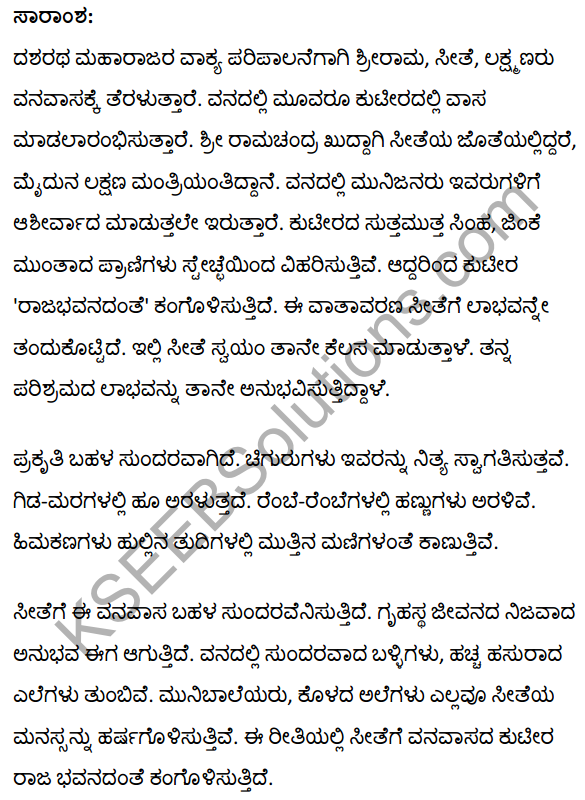
कुटिया में राजभवन Summary in English
This is a poem by one of the foremost Hindi poets of the modern era, Maithilisharan Gupt.
When Sita was in exile with Lord Rama, she felt as if the forest and the hut in which they lived were like a palace. Sita says that her mind is at ease in the little hut as much as it would be in a large royal palace. Lord Rama himself is with her, and so is her brother-in-law Lakshman. The sages grant them their blessings and nothing compares to the wealth that the bountiful nature provides. One can see a deer and a lion drinking from the same river bank. Sita feels that there are only advantages in living in exile.
![]()
Sita says that she is not cared for by others and she takes care of herself, is independent and because of the hard work that is needed, her health is good. She fans herself with her own tresses. Her body feels like it is made of flowers.
Tender leaves welcome her, while her mind is inspired by the flowers and everyday branches bear fruits which are available to them. It is as if in every nook and corner, large hordes of pearls are glimmering. It is as if nature has given them her treasures.
Whoever said that their fate was sealed is wrong. Their fates are glimmering now, according to Sita. She feels like doing something; she is inspired. The forest itself is her household. Janaki herself has come in the form of a woman.
The branches are decorated with flowers and fruits. The green leaves are like plates. The daughters of the sages are like her friends. The waves of the river are like applause. All the raw materials and ingredients are available to her in the forest. Therefore, she finds herself at home in the forest and in her hut as if it was a palace.
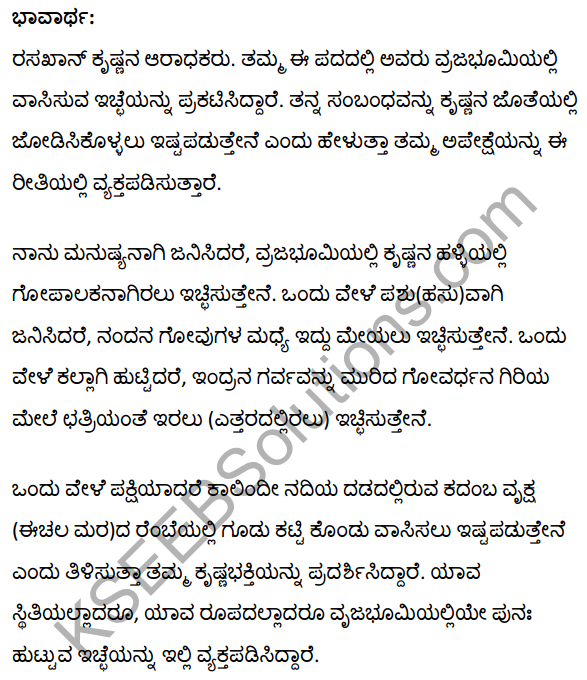
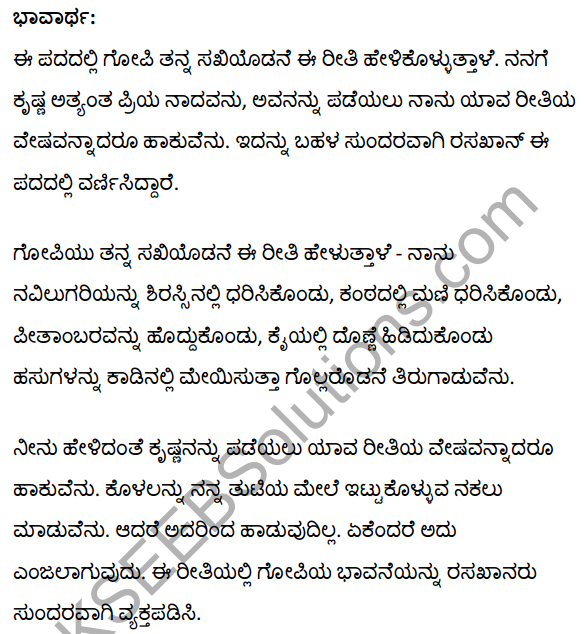
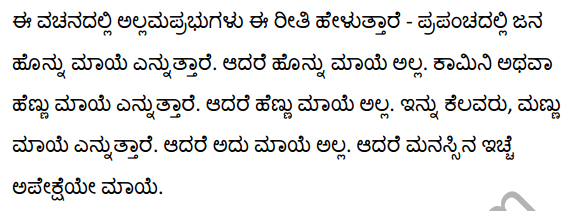
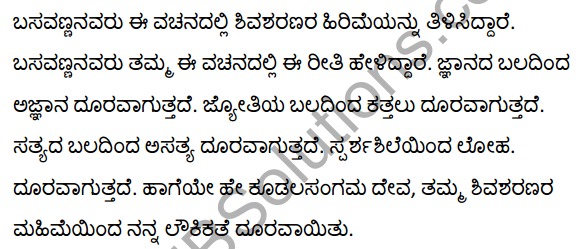
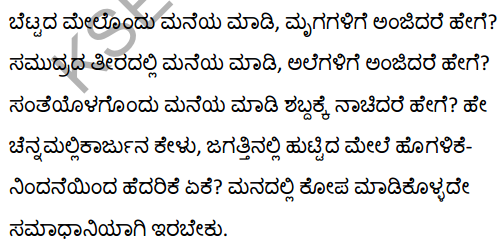


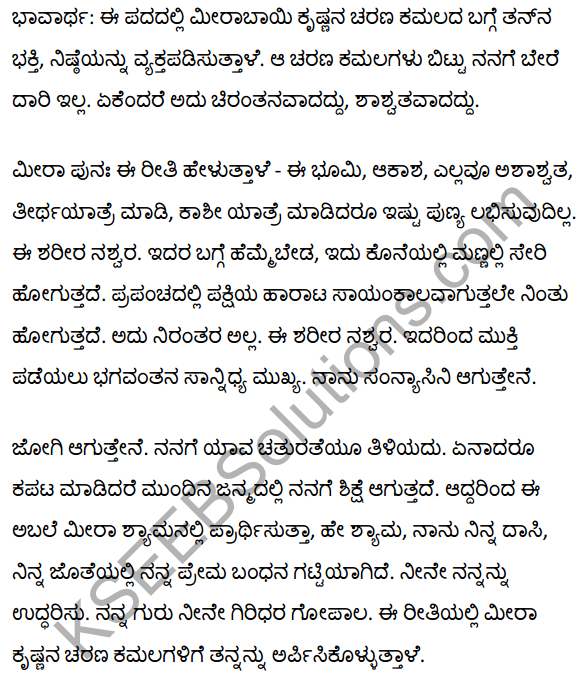
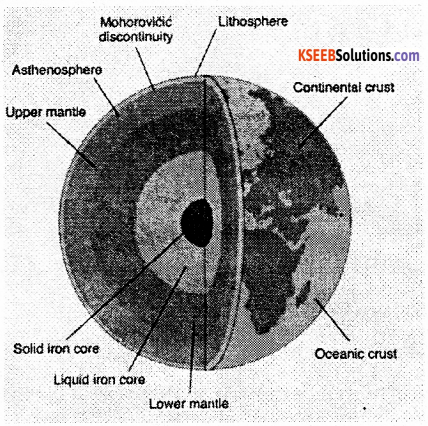
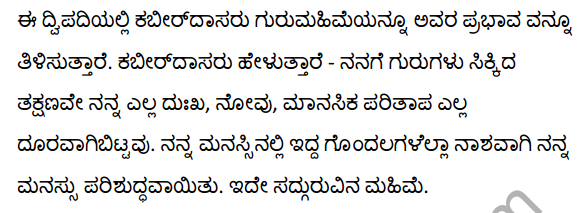
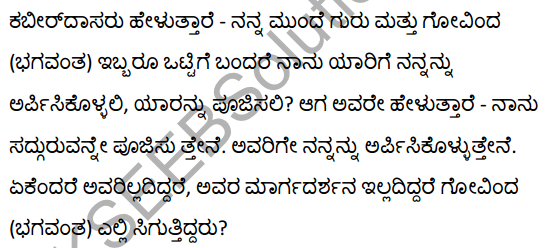
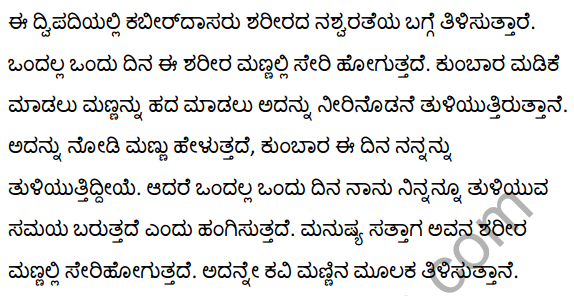
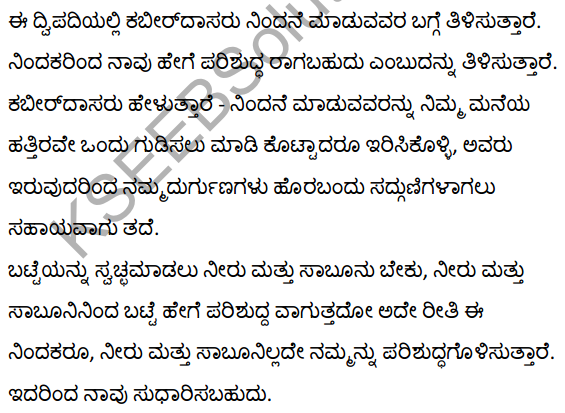
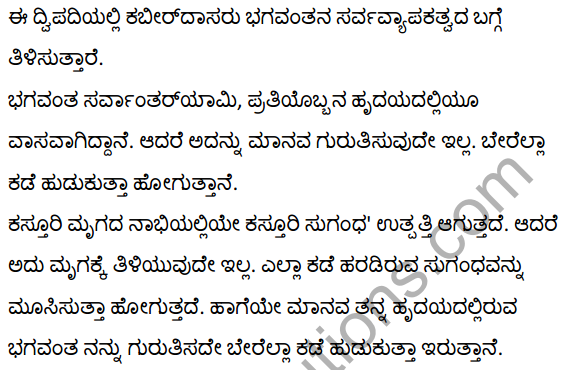
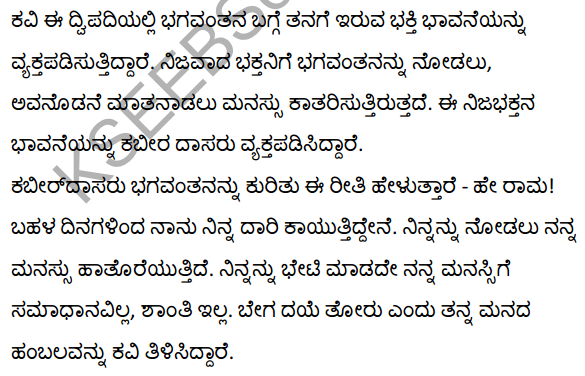
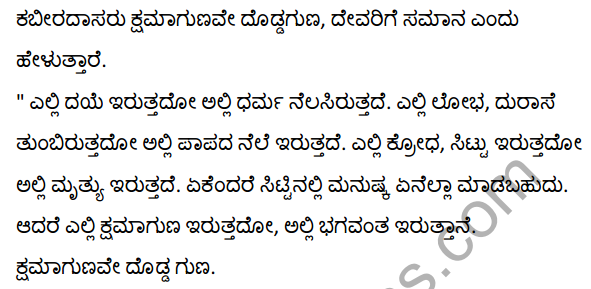
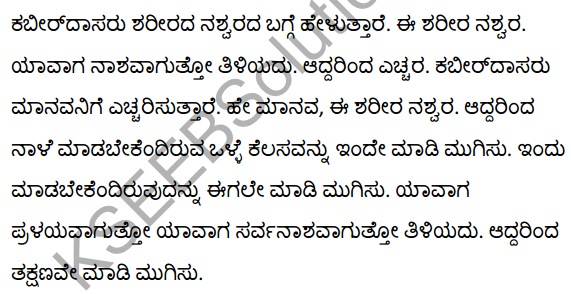
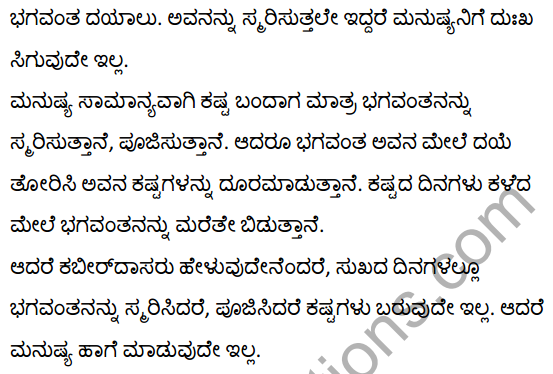
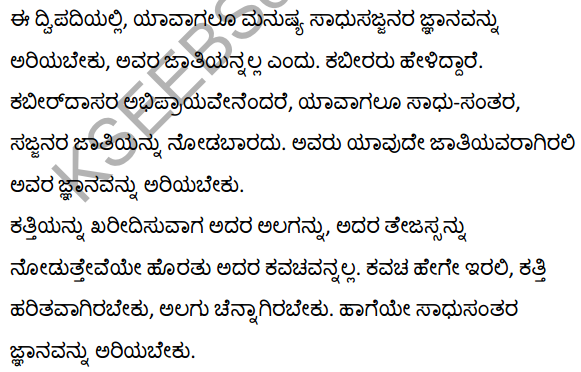
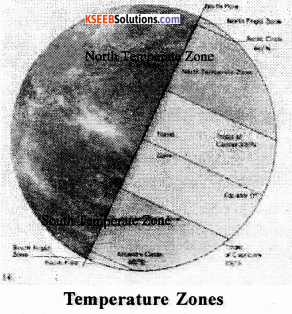
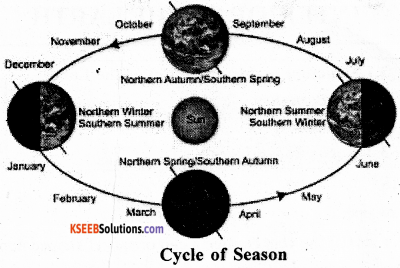
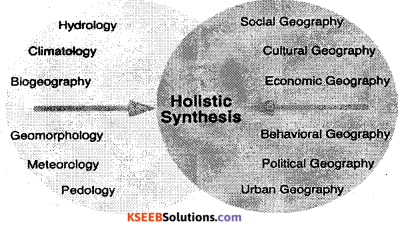
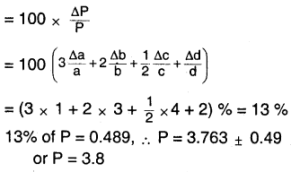
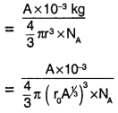
 which is a constant.
which is a constant.